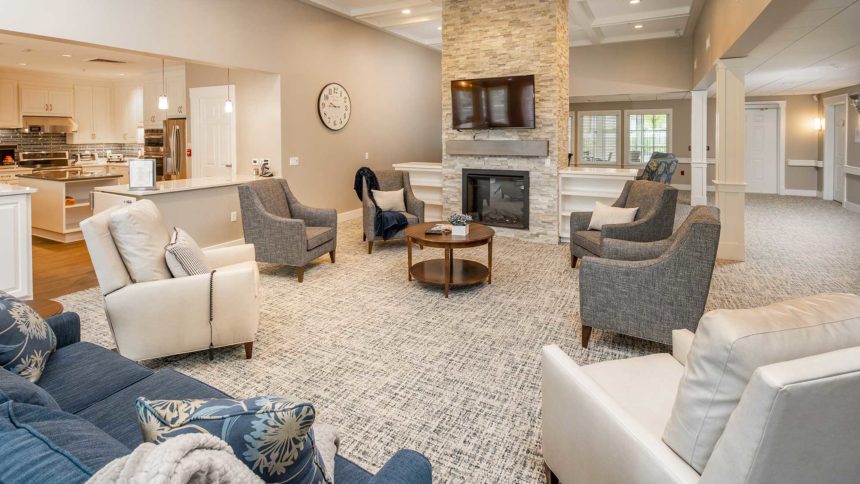
The shores of Lake Erie are dotted with picturesque cottages as part of the northern Ohio landscape. But the latest cottage to be built in the resort area of the Marblehead Peninsula has a unique character and hosts a special property built specifically for seniors.
Nestled in 46 acres of woods located halfway between Sandusky and Port Clinton, the campus at Otterbein Marblehead offers lakeview vistas that rival any resort property in the region. It is within this bucolic setting that the 7,500-square-foot Cornerstone Cottage at Marblehead has joined Otterbein SeniorLife’s campus of small houses, created 15 years ago as part of the movement to deinstitutionalize traditional skilled nursing care.
Starting with a small structure called “The Jane Baker House” (after a long-time resident) that fit into an established neighborhood, the concept became popular with residents. This year, designers conceived Cornerstone Cottage as the perfect companion house.
The total project cost is $2.4 million. This includes land preparation, infrastructure, construction, furniture, appliances and landscaping.
The Otterbein Marblehead Community campus has 57 independent living residences with 37 assisted living and memory support apartments and 20 skilled nursing suites — 10 for rehabilitative care and 10 for long-stay nursing care. Each house has a spacious kitchen and dining area, large living room with fireplace, salon, screened-in porch and outside fenced-in patio for outdoor activities.
The residential environment is not only comfortable for residents, it is at the heart of Otterbein’s approach to “holistic growth” for seniors that facilitates healing and wellness, says Jennifer Lenthe, executive director at Otterbein Marblehead.
“It’s a polar opposite of traditional long-term skilled nursing — it’s a welcoming home,” Lenthe says. “We’re excited to serve the skilled nursing needs of the elders in the Marblehead community, as well as those needing advanced memory support.”
The small house layout and residential feel are at the heart of the concept’s popularity, yet there are special challenges with this type of development, says Jeff Kmet, vice president of construction. These include creating a noninstitutional building while keeping critical life safety components. It is also important to meet with caregivers and prospective residents (“elders”) during the pre-construction design process to get a sense of what elements will best provide a functional, yet homelike, environment.
Still, Lenthe says the positive reaction of residents and family members makes the small house effort worthwhile.
“One of the things I love about my father being here is that it’s so noninstitutional,” says daughter Ramona Anderson. “His laundry is done separately, his medicine is kept in a cabinet in his room, and he is known by his caregivers.”
From the July/August 2020 Issue of McKnight's Long-Term Care News




